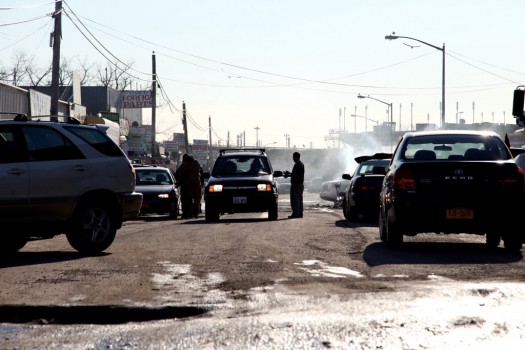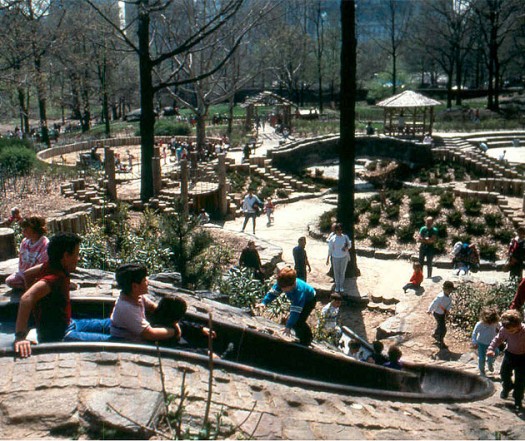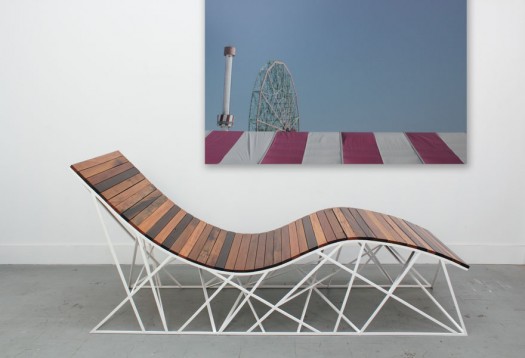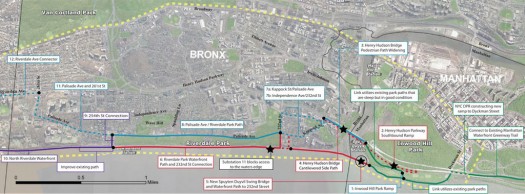
We are celebrating 15 years — and counting — of stories that are deeply researched and deeply felt, that build a historical record of what the city has been.
We are celebrating 15 years — and counting — of stories that are deeply researched and deeply felt, that build a historical record of what the city has been.

Willets Point, the site of one of the large redevelopment proposals for which the EDC lobbied for zoning changes, in violation of State law. Photo: Nicole Salazar
NOT-FOR-LOBBY
The Economic Development Corporation has spearheaded Mayor Bloomberg’s highest profile economic and public works initiatives over the past decade. In so doing, according to a report released this week by the State Attorney General, it has violated New York’s Not-for-Profit Corporation Law by lobbying the City Council to make zoning changes in the auto-repair hotbed of Willets Point, Queens, in 2008, and the recreation district of Coney Island, Brooklyn, in 2009. WNYC reports that Attorney General Eric Schneiderman, in a statement released by his office this week, concludes that the EDC and two smaller neighborhood groups “took steps to create the appearance of independent ‘grassroots’ support for the projects… concealing their participation in community organizing efforts.” Although the leadership of the EDC, which is a Type-C not-for-profit corporation, are appointed by the mayor, it is a non-governmental entity, and as a local development corporation it is restricted from any and all lobbying. A settlement has been reached after a three-year investigation by the attorney general under which the EDC will not pay any penalty, but will restructure itself into two separate entities: the EDC will remain a not-for-profit, and will be permitted to lobby on issues including zoning changes, and the new New York City Land Development Corporation (NYCLDC) will be established as a local development corporation, permitted to receive government-owned property, but not to lobby.
BIKE LANE TO NOWHERE
Last week, Congress approved a new $120 billion transportation bill, for the first time since 2005, that will sustain current financing for at least the next two years. Some of the controversial initial provisions pushed by the House, including funding highway expenses with new oil drilling revenue and privatizing transportation funds, were defeated. Here in New York State, the bill has proved particularly polarizing, continuing a traditional emphasis on highway infrastructure at the expense of much needed transportation investment reform at the urban scale. The new law does maintain federal financing for the Tappan Zee Bridge and the Second Avenue subway, as well as transit. Commuter tax benefits, however, did not increase for public transportation riders, and pedestrian and bicycle projects were hit with a 60-70 percent cut in funding. The bill has been criticized as a temporary solution, out of touch with contemporary needs — especially within cities — and lacking any discretionary incentive for innovation or productivity. Deron Lovaas, the federal transportation policy director at the Natural Resources Defense Council, compared the legislation to a “shameful” reinstatement of old highway bills that favored automotive lobbies over non-fossil-fueled transportation options. James Corless, director of Transportation for America called it “a step backwards.” Whether or not the City or State will find a way to make up for the spending cuts will determine the long-term local effects of this bill. For more information, read the coverage on Streetsblog.

West 67th Street Adventure Playground, via The Learning Landscape
SERIOUS PLAYGROUNDS
Summer days bring opportunities for outdoor play — and opportunities to consider the design of playgrounds and other play spaces in the urban environment. In the current issue of Cabinet, James Trainor traces the history of New York’s adventure playgrounds, the once-lauded utopian trope of urban design in the 20th century that began in the 1960s as a rejection of Moses-era sterilized concrete swingset/slide playgrounds. Forward-thinking “playscapes,” designed by young, innovative designers and architects under iconoclast parks commissioner Thomas Hoving, afforded varied interactions and new forms of play and exploration, spurred on by the repurposing and urban restoration efforts of the 1960s. Today, the most successful playgrounds continue to be those that, in Trainor’s words, “unleash children’s natural instincts to choreograph their own experiences.” DNAinfo took a look at what design features bring the kids running to a few recently-renovated Brooklyn playgrounds: Interactive game boards, water features, funhouse mirrors and “challenging” play equipment make the newly-renovated J.J. Byrne Playground a “destination playground” for some parents, as does the “giant geodesic rope climbing structure” in Prospect Park’s Vanderbilt playground. Meanwhile, across the river in Macombs Dam Park in the Bronx, the city’s first adult playground is being tested — in effect an outdoor gym, decked out in classic playground colors and forms to recall nostalgic summer afternoons. Borrowed from similar concepts in China and Europe, the goal of these grown-up outdoor play areas is to encourage sedentary adults who might forgo a gym or treadmill to get active in a more friendly and welcoming space. NYC Parks Commissioner Adrian Benepe has called the increasing popularity of the trend representative of “a continuing evolution of both parks and playgrounds.” It’s a way for working adults, who are normally banned from playgrounds unless accompanied by a child, to feel young at heart and get physically fit. Plus, unlike a gym, membership is free.

Cyclone Chaise | Image courtesy of Uhuru Design
WOOD CHUCK
Continuing a rezoning process begun in 2003, Coney Island is undergoing some immense transformations, bringing in new rides, pavilions and attractions in an attempt to turn the classic summer beach getaway into a year-round entertainment venue, often at the cost of established and historical establishments. Updating this American icon requires removing sections of the famous boardwalk, to be replaced with a combination of concrete and synthetic wood. The boardwalk, long an enduring symbol of the 46-year-old amusement park and beach area, was made from ipe, an endangered hardwood from Brazil, prized for its hardness and durability. Over the past few years, portions of the discarded boardwalk have been appearing in art galleries, museums, farms, pools and bars across the country. Architects and designers alike prize the Coney Island wood for its quality and for its history, and it doesn’t hurt that the use of salvaged materials increases a building’s LEED rating. See more about where the wood has been surfacing in The New York Times.
WHAT DO YOU WANT?
Neighborland, a street art initiative begun by the public-art-as-civic-dialogue dynamos at Civic Center in 2010 as a series of stickers that invite “residents to provide civic input on-site,” has now become a social media app to solicit the desires of citizens about changes they want to see in their cities. Begun in New Orleans, the site offers a simple “I want ___” or “I wish we had ___” as prompts for users to suggest or discuss simple wishes that add up to a collective vision of shared urban futures. Many of the ideas have gained real support and political momentum, catching the eyes and ears of many of the city’s biggest decision makers and increasing civic engagement and conversation along the way. But it also connects those everyday urban visionaries to each other: users are encouraged to find support for their ideas from personal networks or from the growing community of Neighborland users themselves. The platform has recently launched for New York City, with dedicated sections for each borough. Join the conversation here “to suggest, support and discuss new ideas in your neighborhood.”

Image via The Riverdale Press
THE GREENWAY FORWARD
Earlier this week, at RiverFest, the New York Metropolitan Transportation Council unveiled its plan for the Bronx portion of the Hudson River Greenway, a project launched in 1991 to facilitate the creation and preservation of recreational, scenic, historical and cultural resources stretching from Lower Manhattan up to Troy, NY. Over the past 20 years, the regional cooperative effort has made great strides along the west side of Manhattan and upstate, but the Bronx link has yet to be implemented. The new plan utilizes the Henry Hudson Bridge, including a $15 million cantilevered two-way path for non-vehicular traffic, and traverses streets in Spuyten Duyvil to reach the waterfront before running between the Metro-North tracks from West 232nd to the Yonkers border.
The Roundup keeps you up to date with topics we’ve featured and other things we think are worth knowing about.
The views expressed here are those of the authors only and do not reflect the position of The Architectural League of New York.